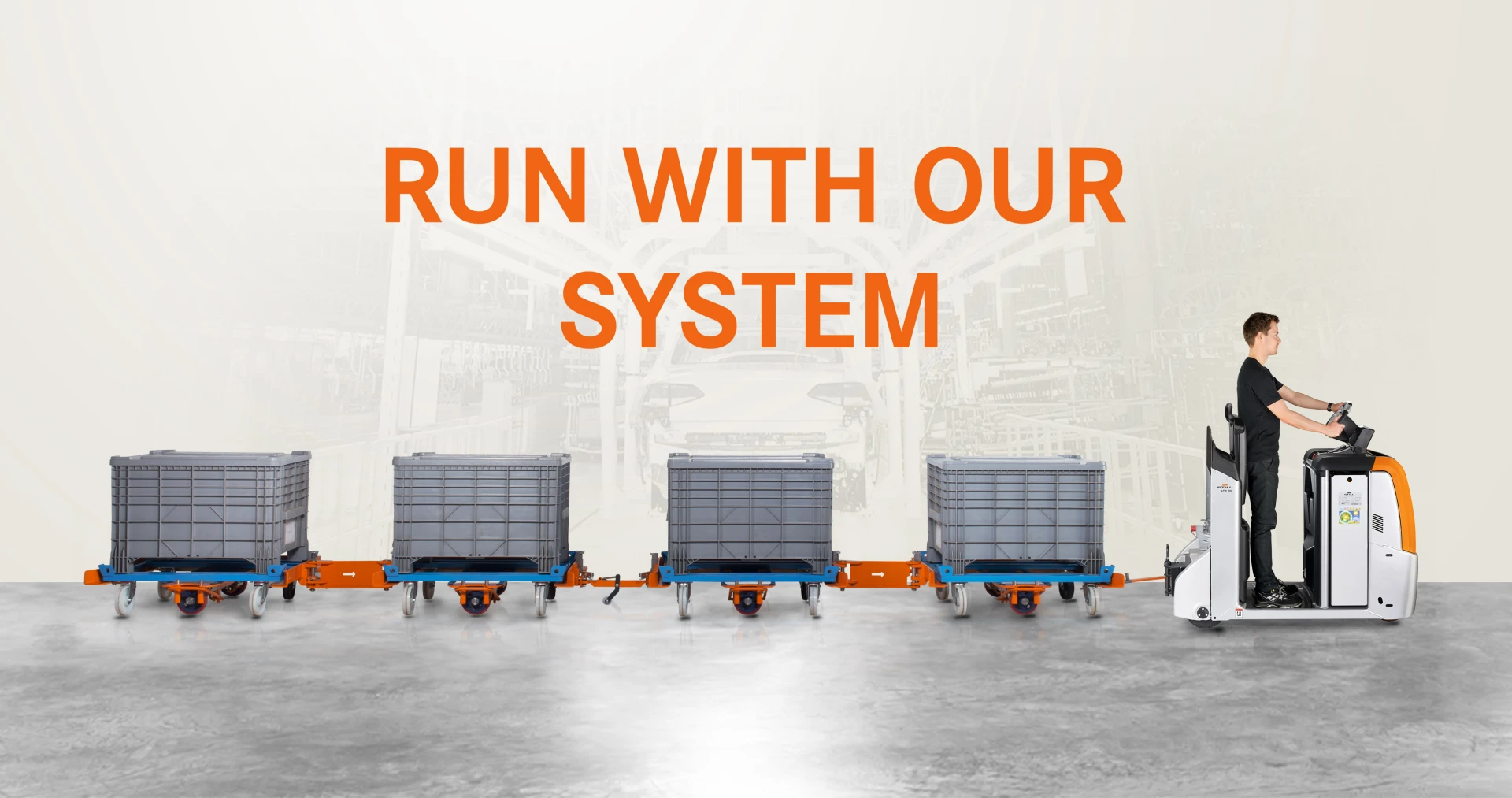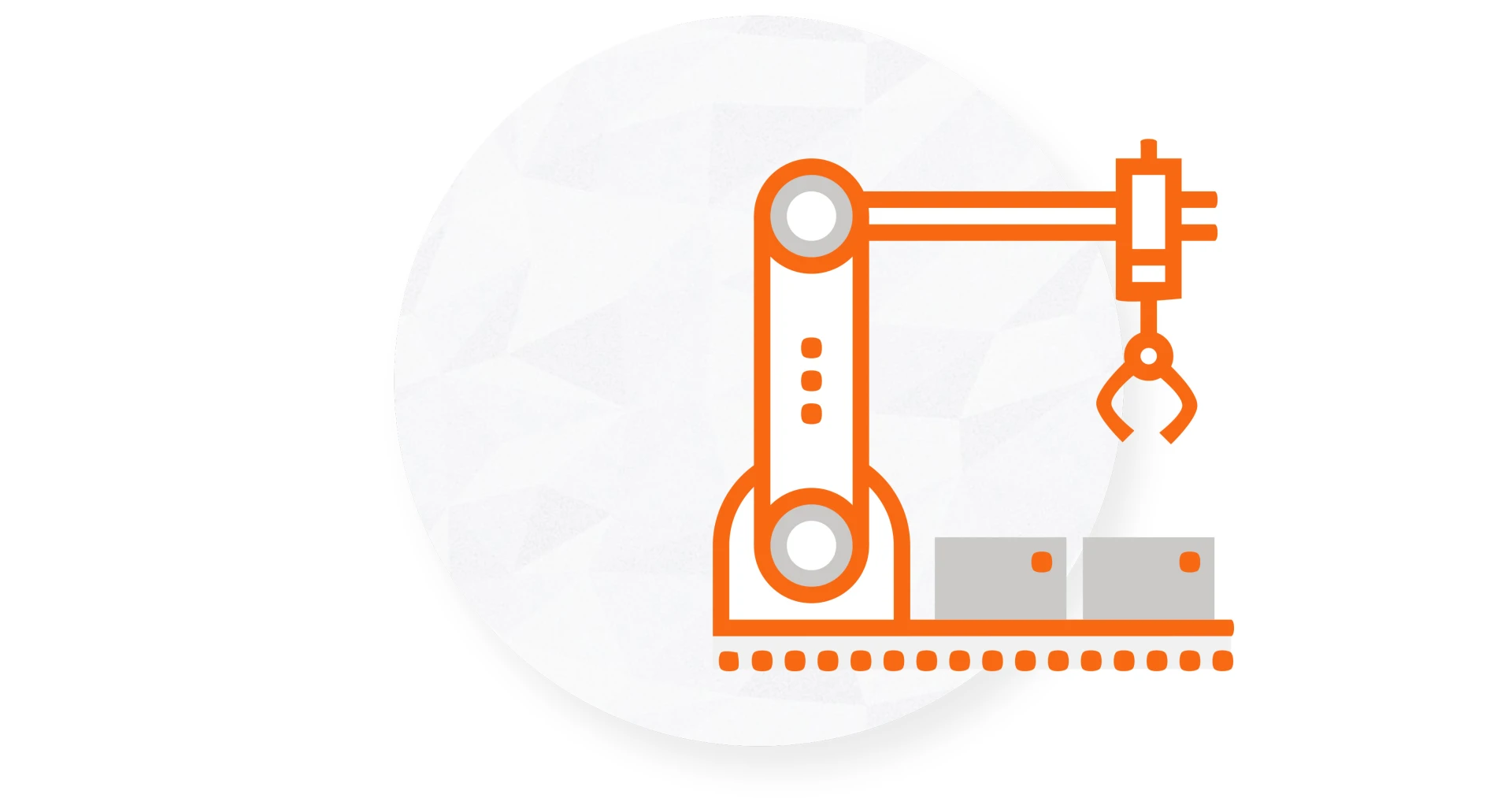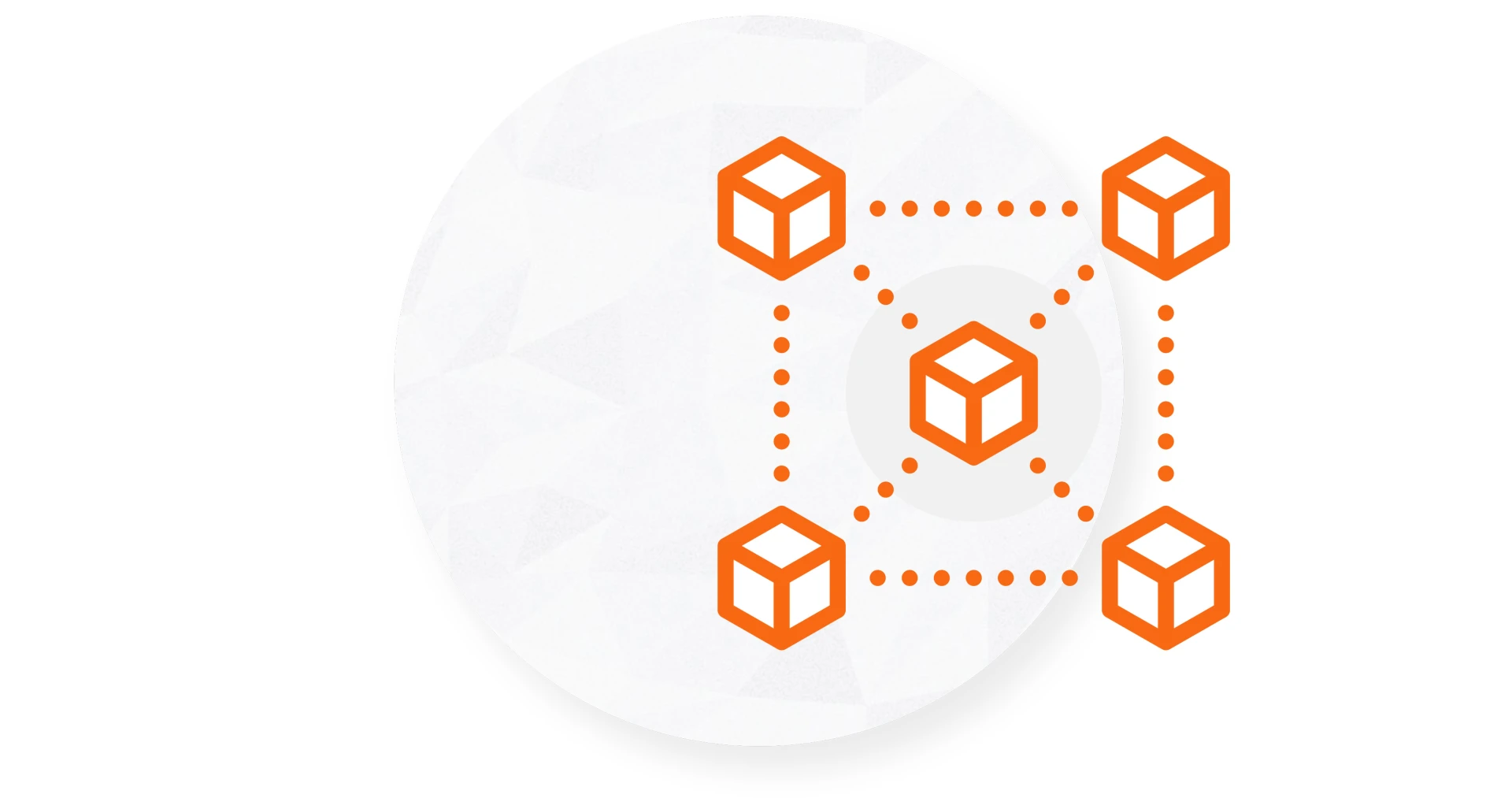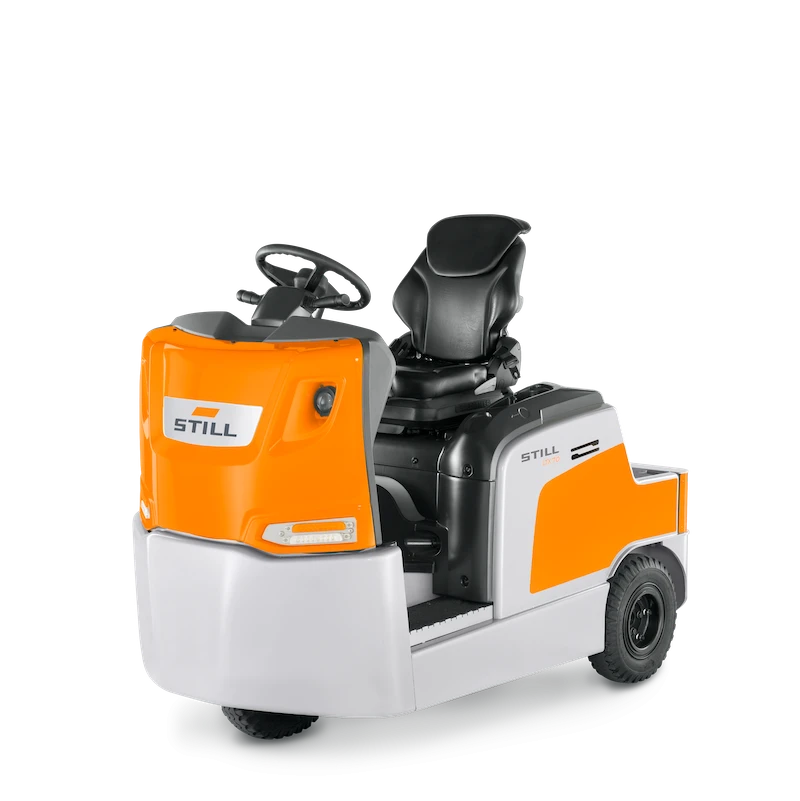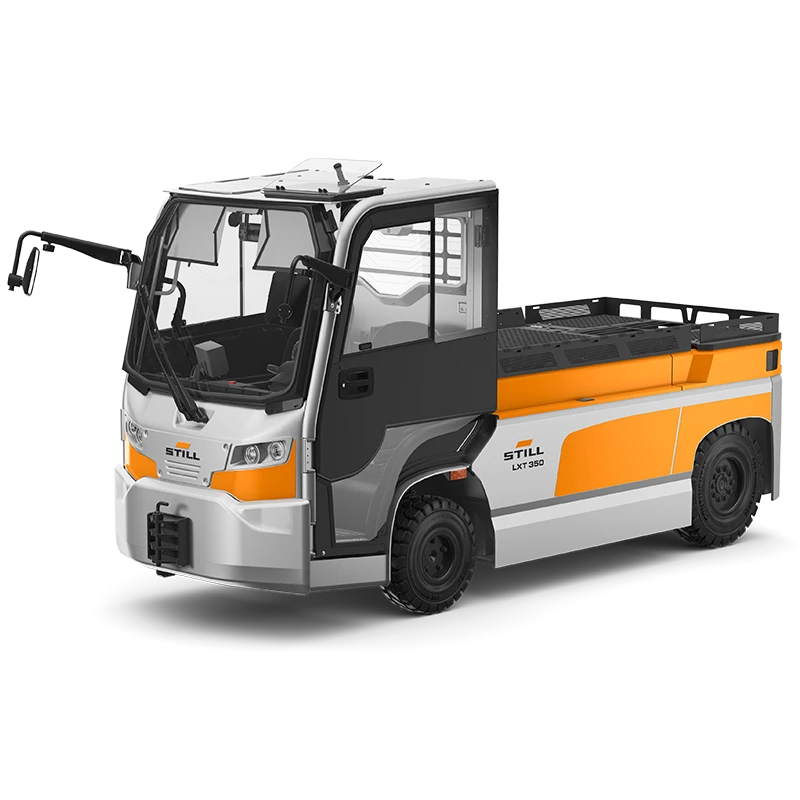
Not all tugger trains are the same
Advantages of the tugger train at a glance
Tugger trains consist of a towing truck and trailers that carry the load. But not all tugger trains are the same; there are different designs and concepts that can be used for different applications.
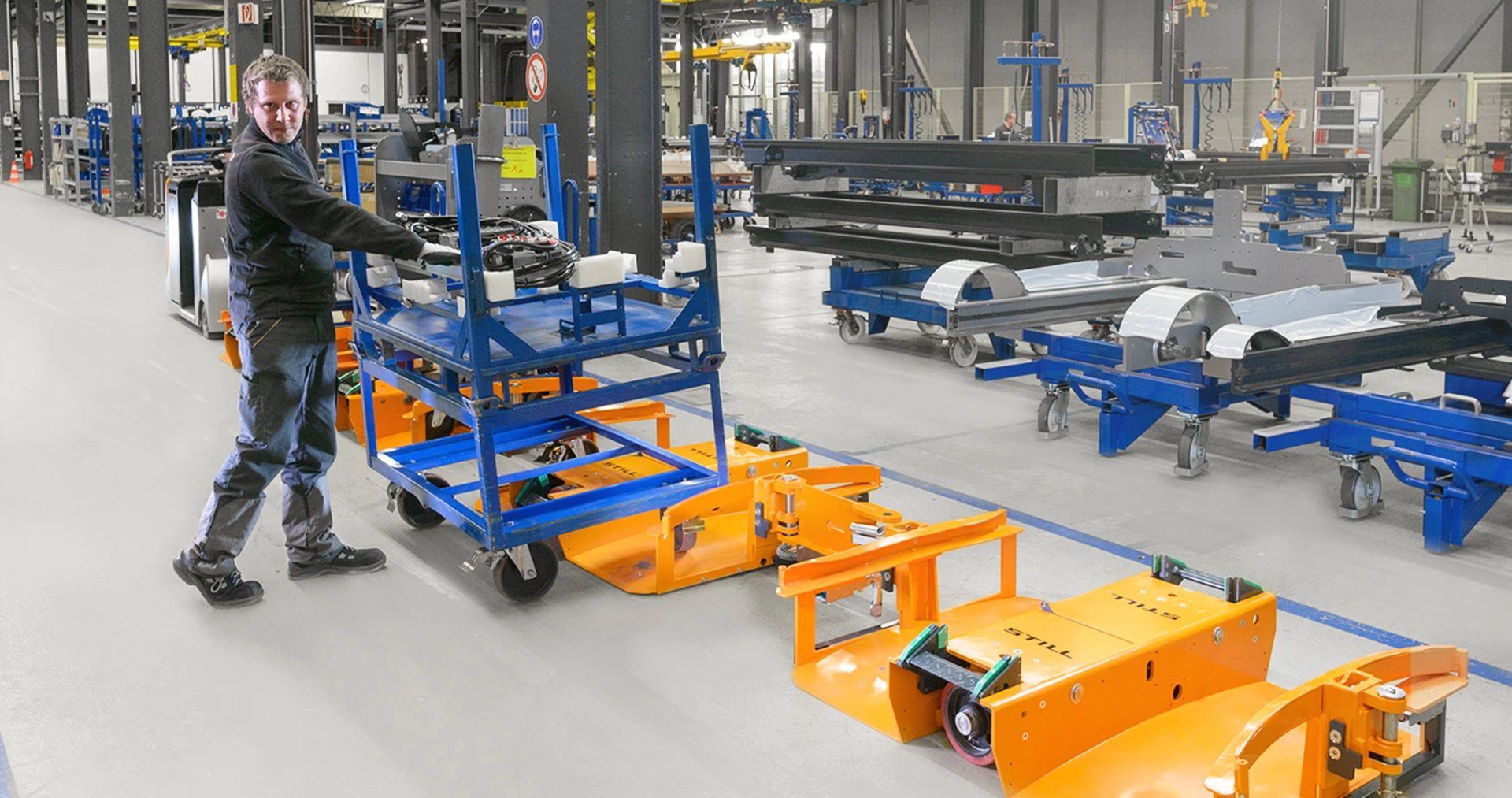
A comparison of tugger train concepts
Not all tugger trains are the same. One key difference is the type of trailer used.
Each trailer carries the load in a different way:
- Trailer conzept: the load is placed directly onto the trailer
- Taxi concept:: the carrier is pushed onto the trailer via a ramp attached to the side and taxied
- Push concept: the carrier is pushed onto the trailer
The concepts not only have technical differences but also vary in the effort and cost required to implement and operate them. The important question to consider is why the tugger train is being implemented now and how it must be designed to fit the company perspective.
The trailer concept is often used as a first step but can become problematic later if the company perspective favours the use of a push system. Trailer systems have long process and load handling times. They are relatively inflexible, cannot be combined with digital information systems and even in low quantities are very cost-intensive.
Push systems, in contrast, are flexible and can be used as a foundation for digitalising and automating the material flow.
Trailer concept
The load is placed directly on the trailer.
The structure of the trailer concept is simple. The load or carriers (e.g. pallets) are placed directly on the trailers. The trailer concept is quite easy to install and has low procurement costs – even in very low quantities – and so is a popular choice for those choosing their first system. When selecting a system, we recommend you consider your long-term application and process development requirements.
Advantages:
- Easy to implement
- Small load carriers can be moved individually and not the large load carriers
Disadvantages:
- Individual trailers are generally disconnected from the towing vehicle and placed directly on the line; alternatively, an additional vehicle is required at the sink points to unload the tugger train
- Inflexible handling
- Static rollers and high process times
- Complex unloading process on the production line
- No options for further development, no combination with digital systems or automation possible
- In the long term, the trailer concept incurs higher costs than the push concept
- Poor ergonomics due to rollers with high roll resistance
- Low maximum speed and poor drive properties
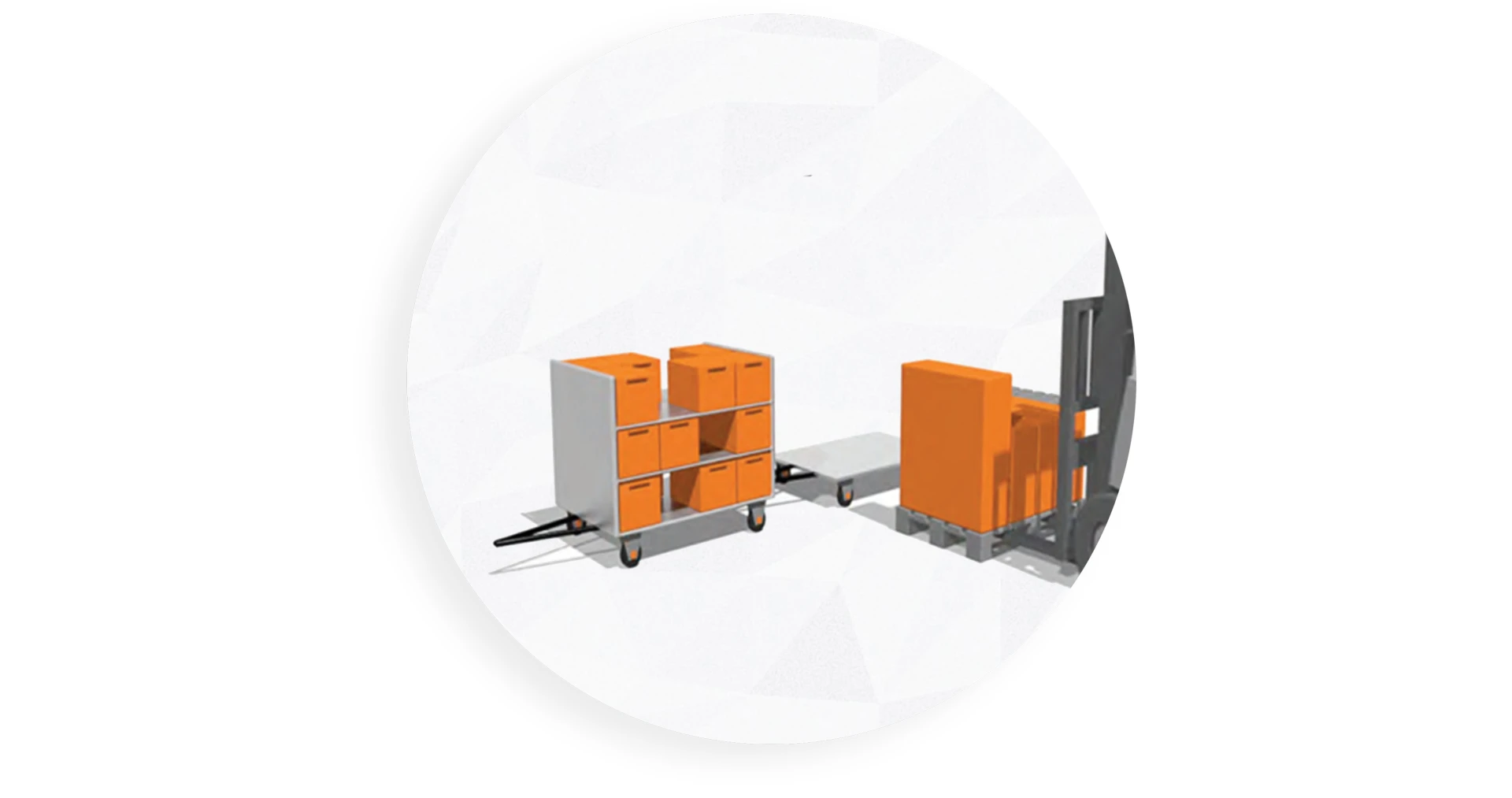
Taxi concept
The carrier is pushed onto the trailer via a ramp attached to the side and taxied.
The trolleys can be loaded from both sides. In terms of process development, the taxi concept comes in second place between the trailer and push systems. Depending on the supplier, digital processes can be implemented.
Advantages:
- Can be loaded on both sides
- Trolleys are on the line and not on the floor
Disadvantages:
- High power required for loading
- Heavy devices with poor visibility
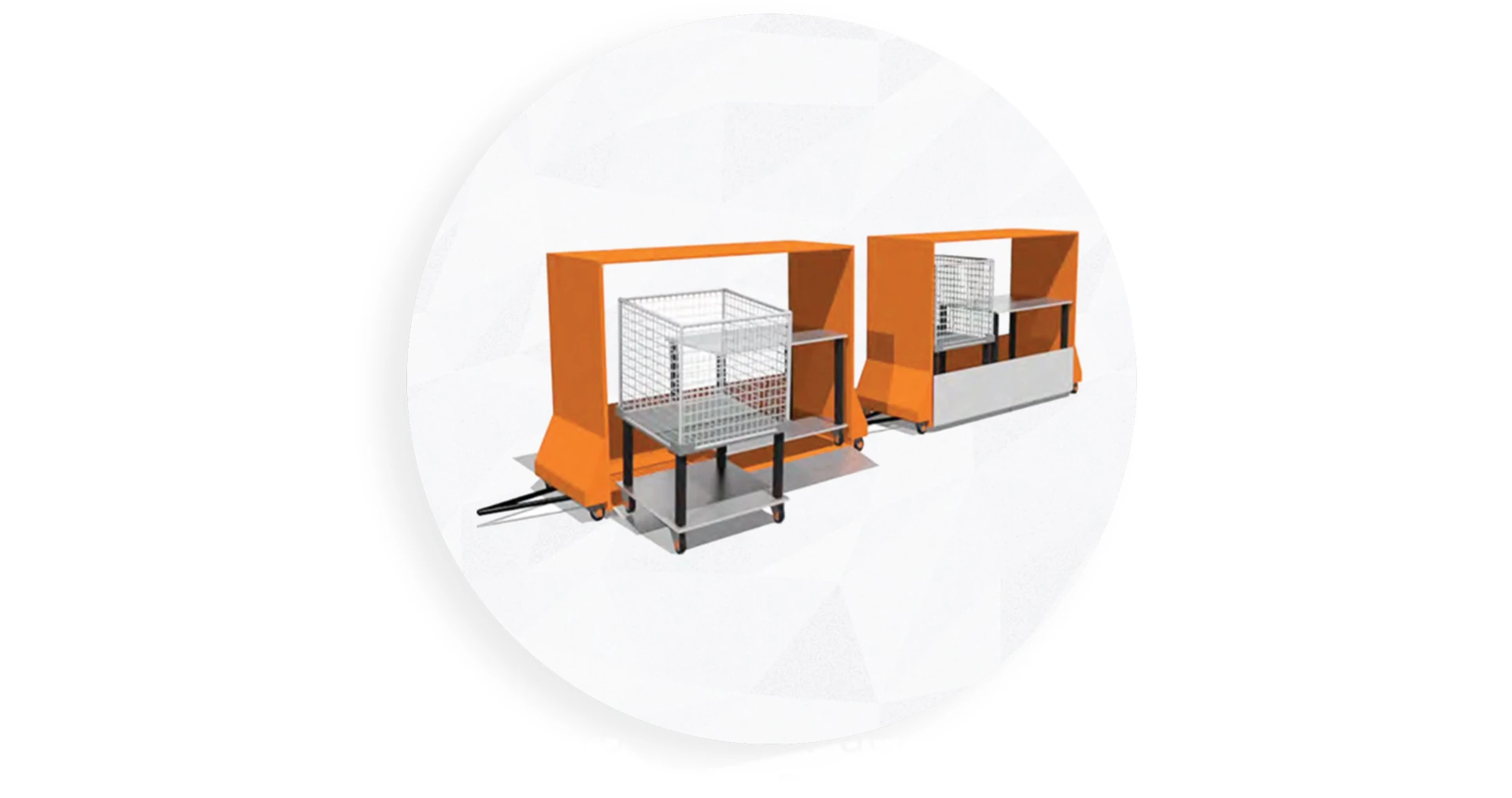
The push concept
The carrier is pushed onto the trailer.
The goods are loaded and unloaded either on one or both sides using trolleys, depending on the trailer used. From a strategical point of view, i.e. regarding the expansion of the system, we recommend a push system for the following reasons:
Advantages:
- Simple loading and unloading
- Diverse range of frames available: either B, C, or (self-sufficient) E-Frames can be selected depending on the individual requirements for use
- Can be combined with digital control systems and further developed through to (full) automation
- Different energy supply concepts can be selected depending on the intended area of application
Disadvantage:
- High noise level, poor drive properties, high wear and risk of accident when all wheels are on the ground (but not the case for all suppliers)
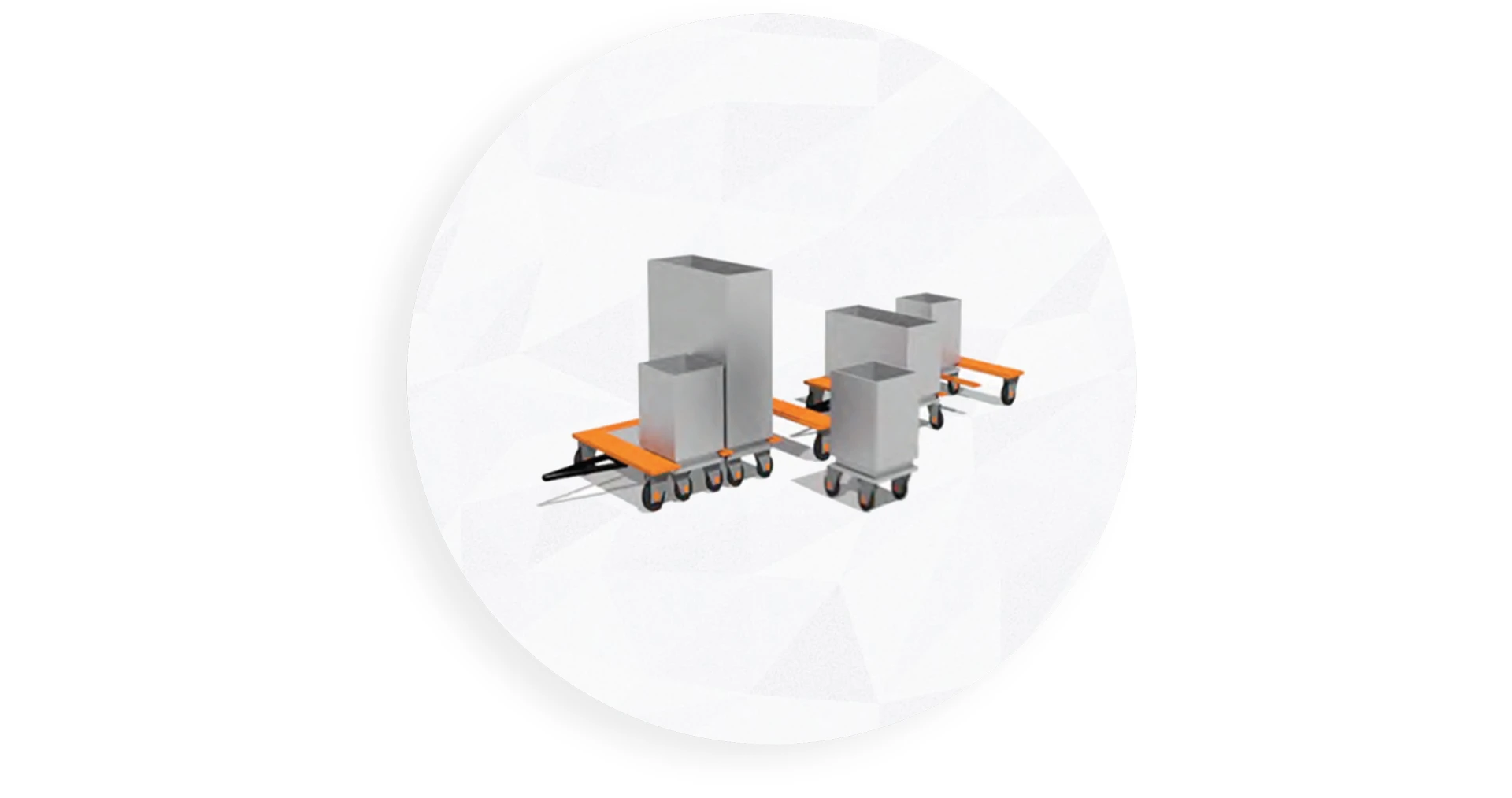
Is the push system the right choice for initial implementation?
Selecting a tugger train is a strategic decision. It must take into account the initial work required and the development options that are required in line with your company perspective.A trailer system shares many of the advantages of a tugger train and fulfils a number of requirements for process optimisation. If you want to develop processes in line with your company perspective, right through to a digitally supported or even automated supply system, we recommend you implement our state-of-the-art push system.
State-of-the-art push systems, such as the STILL LiftRunner, are able to lift up the trolley wheels throughout the journey, keeping the drive noise and wear on the trolley to a minimum. Various lifting systems are available for this.
Hydraulic system
A hydraulic unit on the towing vehicle lifts up the trailers before the journey starts. The individual trailers are connected via a hydraulic line. The only disadvantages are the use of hydraulic oil and the maintenance requirements.
Electric system
There is an electrical connection between the trailers and the towing truck. The electric lifting system is used primarily in sterile areas, for example in the pharmaceutical or food industries.
Pneumatic system
A compressor on the towing truck creates the pressure required for lifting and lowering. The trailers are connected via a pneumatic line.
Self-sufficient system
The trailers are lifted hydraulically, and no device is needed for this because the required energy is produced during the drive movement. When the trolleys are slotted in, hydraulics lift up the individual trailers directly.
Summary: There are different designs and concepts available for tugger trains. The desired concept must be selected according to the intended area of application.
Your expert advisor will be happy to answer any questions you may have about your tugger train introduction. Call us or arrange a callback.
Request to: Not all tugger trains are the same

